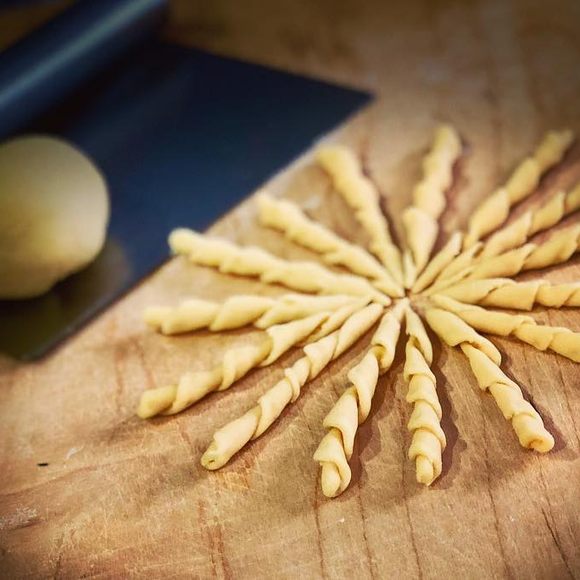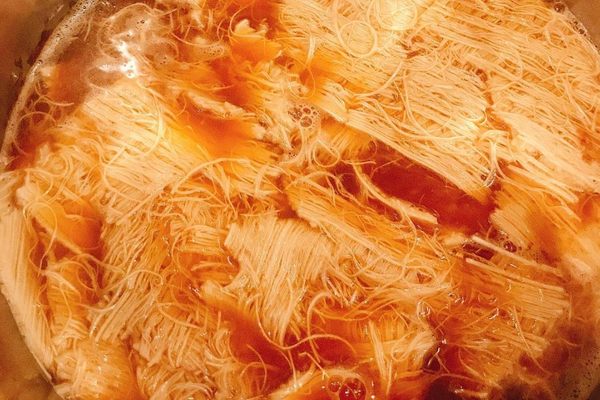Prepared Foods
Andarinos di Usini
Made only in one Sardinian village, these sun-dried pasta spirals are crafted twist by painstaking twist.
They are dried in the Sardinian sun, twists of handmade semolina pasta made with nothing but wheat, salt, and warm water. Historically, andarinos were a pasta shape for special occasions, including weddings and the feast of Santa Maria, the patron saint of the Sardinian town of Usini. Today, only a handful of people continue to craft the delicate spirals of pasta, passing down their craftsmanship in family homes and small pasta shops.
There’s written evidence of andarino-making in Usini since at least the 17th century, and due to Sardinia’s location in the middle of the Mediterranean Sea, food historians speculate that the unique pasta shape either came from Spain or was transported via trade from Sardinia to Spain, Liguria, Tuscany, and Piedmont. But crafted by local pasta makers and home cooks, and made only by hand, the andarinos of Usini are in a class of their own.
To make the spirals, cooks mix semolina flour, salt, and warm water, then press the resulting dough into small cylinders. They tear the half-inch diameter tubes into three- to four-inch segments. Historically, pasta makers used a small local reed to shape the pasta. Today, however, some pasta makers use edges of tile or glass to assist them in forming the characteristic ridges. Others, painstakingly, form each telltale twist with nothing but their fingers. With extreme delicacy, they press and twist the dough four times to form the pasta’s signature spiral. The resulting shapes—delicate, coiled, and fatto a mano (handmade)—are dried in the sun, or in ovens when there is not enough sunlight. Once dried, they can be boiled for 20 minutes to an al dente texture and served with sauce.
Today, visitors to Usini can buy the handmade pasta from local producers or—if they’re lucky—finagle an invitation to a family meal. They can also sample andarinos prepared the traditional way in local restaurants, with su ghisadu, a sauce of mixed lamb, beef, mutton, and pork, or sa bagna, a fresh tomato sauce, and sprinkled with Sardinian pecorino. With a bowl of andarinos, a glass of wine, and a side dish of Sardinian sunshine, visitors will likely find themselves thanking Usini’s patron saint for the signature dish of her yearly celebration.
Where to Try It
-
Pastificio Andarinos Di Pais Maria Rosaria
Via Mazzini 35, Usini, 07049, ItalyPasta maker Maria Pais has been credited with helping preserve this ancient tradition in Usini.
Written By
 Reina Gattuso
Reina Gattuso














